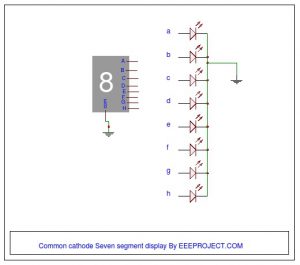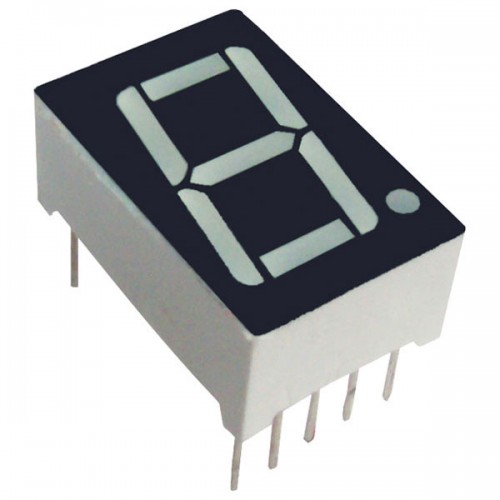

So, here the segment ‘a’ is simply connected to pin-13 of the Arduino board. In order to activate a specific segment, for instance, segment ‘a’, the equivalent Arduino Pin should be made High. the loop routine runs over and over again forever: PinMode(d, OUTPUT) pinMode(e, OUTPUT) pinMode(f, OUTPUT) PinMode(a, OUTPUT) pinMode(b, OUTPUT) pinMode(c, OUTPUT) Int a = 13 //Arduino pins connected with 7 segment pins Because in this type, LED lits once some +positive voltage is provided to any pin. In common cathode type, reverse the logic from LOW with HIGH & HIGH with LOW. So the common pin can be simply connected to Arduino board Pin 9 & is made HIGH always. In this circuit, a common cathode type 7 Segment Display is used. From Pin-g of seven segment display to pin7 of Arduino board.From Pin-f of seven segment display to pin8 of Arduino board.From Pin-e of seven segment display to pin9 of Arduino board.From Pin-d of seven segment display to pin10 of Arduino board.From Pin-c of seven segment display to pin11 of Arduino board.From Pin-b of seven segment display to pin12 of Arduino board.From Pin-a of seven segment display to pin13 of Arduino board.

The connections made from 7 segment display pins to Arduino board pins follow as The required components of this circuit mainly include Arduino UNO, breadboard, power supply, seven-segment display, 7 220Ω resistors, and connecting wires. So the interfacing diagram, required components, code, and its working are discussed below. In this circuit, a common anode seven segment display is interfaced to the Arduino UNO board to display 0 to 9 digits within a loop. Interfacing a seven-segment display with Arduino is shown above. This is done to correctly identify the pattern of connections between them and the input pins of the microcontroller.ħ Segment Display Interfacing with Arduino You must have noticed that each segment (a, b, c, d, e, f, g) is assigned a letter from A to G. The circuit of a 7-seg display can be easily implemented by connecting 8 LEDs in a specific pattern as shown in the below figure. 7-segment Display Interfacing with Arduino For instance, if you want to display numeral ‘1’ then both the segments like b & c need to be switched ON & the remaining segments will be switched off. If we disconnect the power, particularly for ‘g’ then it will display as ‘0’. Once the power of a 7-segment display is ON then an 8 number will be displayed. Based on the seven-segment type, the segment pins are applied with logic zero or high & in the same method to the common pins also.
#Common cathode 7 segment display series
Once these pins are forward biased in a series then it will display the specific alphabet or numeral. The display can be controlled through freely left pins. The working of the 7-segment display can be done by glowing the necessary individual LEDs within the digit. When we want to turn on any particular segment then we need to apply logic zero on the corresponding cathode. To interface a common anode type to a microcontroller then the Cathodes of each segment are connected through appropriate port pins of the microcontroller. In order for a segment to light up, the corresponding cathode terminal will be grounded and the common anode terminal is provided with +5V source voltage. In this type, all LEDs share a common anode terminal while each cathode terminal is connected to a different segment. Please refer to this link for 7-segment Display MCQs 7 Segment Display Common Anode: There are two main types of 7-segment displays: The only difference is that they have 8 pins rather than 2 pins because each of the 7 LEDs has its own pin along with a common cathode or anode pin. in series with a current limiting resistor). 7-segment displays are connected to the microcontroller in the same way as LEDs (i.e.


 0 kommentar(er)
0 kommentar(er)
